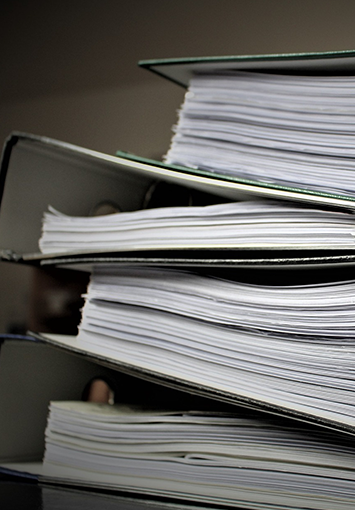Records Management Knowledge Center
Learn how to manage, organize, and store your critical data more efficiently.
Improving the accessibility and security of your data doesn't need to be difficult. Our knowledge base contains all the information you need to make informed decisions when its time to modernize your records management practices.
Moving paper records to an off-site facility for scanning isn’t always practical. Some documents might be too fragile to transport, while others might contain sensitive information that’s better kept under your direct control. In some cases, regulations may even require files to remain on-site, leaving off-site scanning off the table entirely. Whatever the reason, sending
With more businesses moving away from paper and toward electronic recordkeeping, those that can’t transport their records offsite often feel stuck, unable to move forward with digitization. Whether it’s due to security concerns, legal requirements, or logistical challenges, going paperless can seem out of reach. This can quickly turn into a frustrating cycle. Records pile
Keeping up with regulatory rules and compliance requirements can feel overwhelming, but it’s a necessary part of running a successful business. While it can be frustrating at times, these regulations provide a framework that helps you protect your data, your clients’ data, and your business’s reputation. However, monitoring regulatory compliance is much more challenging when
So, your business has decided to go paperless, and that means digitizing all your existing records. One of the first decisions you’ll need to make is who will handle your project. There’s a lot to think about, like how many records you need to scan, whether they include sensitive or confidential information, and any legal
As digital storage becomes more affordable and accessible, many businesses are moving away from physical documents altogether, choosing instead to store their records electronically. This makes sense, because as we all know, paper-based recordkeeping results in lower productivity, higher costs, and and poor data security. However, it can be difficult for those with a large
Transforming paper records into a well-organized, easy-to-use digital archive is no small task. Without the right experience or equipment, the process can quickly become overwhelming, and there’s a lot that can go wrong along the way. That’s why many businesses choose to outsource their document scanning projects to a professional company like SecureScan. Working with
A small change is coming to the Health Insurance Portability and Accountability Act (HIPAA) in 2024, in regards to managing reproductive health information. The Department of Health and Human Services (HHS) finalized these changes in April 2024, bringing in new rules on how this information is handled and protected. Here’s what you need to know
In this article, we’ll break down the proposed changes to the HIPAA Security Rule, explain why they’re necessary, and share a few easy steps you can take to protect your patients’ information.
The increased demand on HR departments to manage these documents added hours of manual data entry, which led to a litany of administrative issues including misfiled/lost records, compliance issues, and inefficient workflows. Thankfully, the source of these issues is well known: outdated paper-based records keeping.
Along with laws that protect employee rights, labor rules, and safety protections, all of which have their own detailed requirements, employers must adhere to strict employee data retention requirements to keep the business compliant and in good standing.









